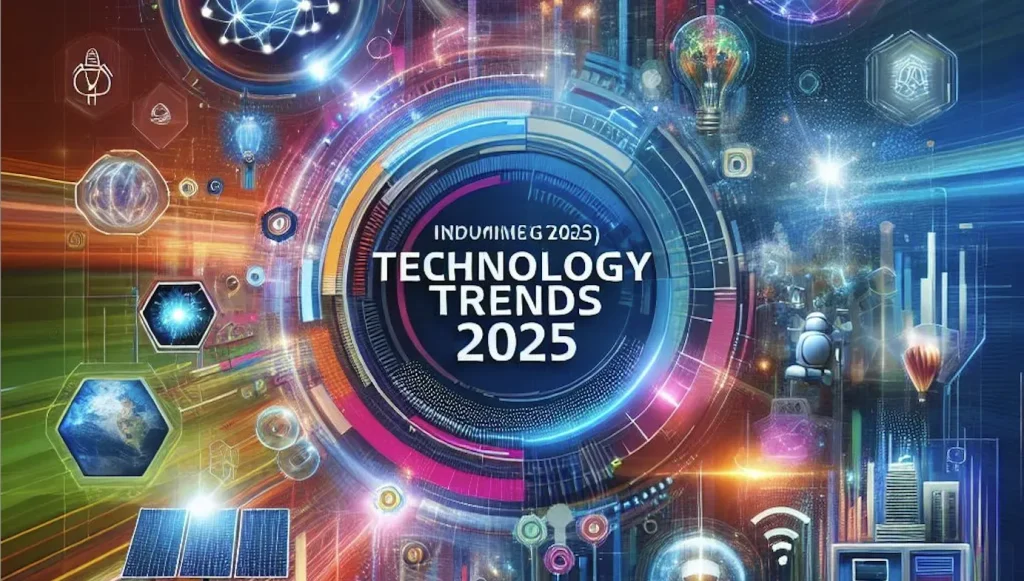Technology Trends 2025 is reshaping how innovators and enterprises plan for the next wave of growth. The pace of change is accelerating as AI, cloud, data, and automation converge with security and governance. In 2025, organizations will navigate a complex landscape where technology choices directly impact competitiveness, customer experience, and resilience. This article highlights AI trends 2025 as a key driver and explains how enterprises can align strategy, architecture, and talent to capitalize on opportunities. Whether you’re leading a multinational corporation or a fast-growing startup, understanding these shifts will help you chart a practical, high-impact tech roadmap for the year ahead.
Beyond naming trends, the discussion pivots to how organizations orchestrate data, people, and platforms to stay competitive. Think of an intelligent enterprise where analytics-first operations, AI-assisted decision making, and cloud-powered services orchestrate products and experiences. This broader lens emphasizes governance, security, and collaboration across teams, while recognizing the rise of multi-cloud ecosystems and API-driven integration. In practical terms, businesses will focus on scalable architectures, developer enablement, and continuous learning to translate strategic intent into tangible value.
Technology Trends 2025: Building the Intelligent Enterprise with AI Trends 2025
Technology Trends 2025 is shaping the intelligent enterprise by accelerating AI trends 2025, featuring more capable generative models, copilots for knowledge workers, and AI-assisted decision making that augments human judgment.
To harness AI trends 2025 responsibly, organizations are investing in governance, transparency, and accountability. Key practices include model risk management, bias auditing, explainability, and auditable decision trails, as well as ensuring data quality and secure access controls as AI touches customer experiences, supply chains, and operations.
Digital Transformation 2025: From Projects to an Integrated Data-First Operating Model
Digital Transformation 2025 represents an ongoing journey toward a data-first operating model where data is treated as a strategic asset enabling real-time analytics, personalized customer journeys, and agile product development.
Practically, this means consolidating data platforms, standardizing APIs, and embracing cloud-native architectures that support rapid experimentation. It also requires rethinking organizational design to promote cross-functional teams, iterative learning from failures, and a culture that accelerates time-to-insight.
Cloud Computing Trends 2025: Multi-Cloud, Edge, and AI-Powered Services
Cloud Computing Trends 2025 reflect a maturation of cloud deployments into hybrid and multi-cloud ecosystems, with edge computing bringing workloads closer to users for faster response times and improved resilience.
Serverless architectures, AI-powered cloud services, and data-centric platforms are becoming the default for new initiatives. FinOps practices enhance cost visibility and optimize resource allocation, enabling safer experimentation and quicker time-to-market.
Enterprise Technology Trends: Ecosystems, API-First Architectures, and Security
Enterprise Technology Trends emphasize platform ecosystems, API-first development, and low-code/no-code tools that accelerate integration and rapid app delivery while maintaining governance.
Security remains a foundational pillar of Technology Trends 2025. A zero-trust mindset, continuous authentication, and ongoing risk assessment are essential as organizations expand their digital footprints, with security embedded into every stage of product design and deployment.
IoT, Automation, and Intelligent Operations in 2025
IoT trends 2025 span industrial and consumer devices, featuring digital twins, predictive maintenance, and rich telemetry that enable optimization and closed-loop decision making.
Paired with automation and intelligent operations, these trends reduce downtime, improve quality, and lower operating costs. In Technology Trends 2025, IoT is about turning data, analytics, and action into measurable value.
Upskilling for AI Trends 2025 and Digital Transformation 2025: People, Skills, Governance
Upskilling and reskilling are essential to capitalize on AI trends 2025 and digital transformation 2025. The most successful teams bring together engineers, data scientists, cybersecurity professionals, and business leaders to translate technology capabilities into strategic outcomes.
Training programs, mentorship, and hands-on sandboxes are critical to maintaining momentum as tools and platforms evolve. Organizations should align learning with governance, talent strategy, and measurable business value to sustain progress through 2025 and beyond.
Frequently Asked Questions
What is Technology Trends 2025 and how should I start aligning strategy?
Technology Trends 2025 encompasses AI trends 2025, digital transformation 2025, and cloud computing trends 2025 shaping strategy. Start by inventorying data assets, establishing governance, and prioritizing high‑impact use cases to align strategy, architecture, and talent for rapid, measurable value.
How do AI trends 2025 influence decision-making and automation in the enterprise?
AI trends 2025 bring more capable generative models and copilots that scale knowledge work and automation. Emphasize governance, transparency, and accountable ownership to ensure ethical, auditable AI decisions across customer experiences, operations, and product development.
Why is digital transformation 2025 described as an ongoing journey rather than a single project?
Digital transformation 2025 requires an integrated, data‑first operating model and real‑time analytics. The goal is to turn raw data into trusted insights that inform strategy, marketing, and operations, with culture, governance, and cross‑functional teams playing central roles.
What should enterprises consider when adopting cloud computing trends 2025 for a multi-cloud setup?
Cloud computing trends 2025 favor hybrid/multi‑cloud architectures, edge computing for latency‑sensitive workloads, and FinOps for cost visibility. Prioritize portability, security, and governance to accelerate experimentation and time‑to‑market.
What role do security and governance play in Technology Trends 2025 and enterprise technology trends?
Security and governance are foundational in Technology Trends 2025 and broader enterprise technology trends. Adopt a zero‑trust framework, continuous risk assessment, and data governance with auditable decision trails to ensure safe, compliant deployments across ecosystems.
How can organizations build skills to stay ahead in Technology Trends 2025?
Invest in upskilling and reskilling to align talent with AI trends 2025, digital transformation 2025, and cloud computing trends 2025. Promote cross‑functional teams, practical labs, and ongoing learning to sustain momentum and maximize impact.
| Topic | What it means | Key Benefits | Strategic Focus |
|---|---|---|---|
| AI trends 2025 and the intelligent enterprise | Maturation of AI in business contexts: generative models, capable copilots for knowledge workers, and AI‑assisted decision making; moving from pilots to scalable deployments with governance, transparency, and accountability. | Faster time‑to‑insight, higher productivity, improved customer engagement, faster product development cycles; measurable value. | Invest in governance, data quality, explainability, auditable decision trails, and clear ownership; embed robust data governance, secure access controls, and accountable AI practices. |
| Digital transformation 2025 as an ongoing journey | An integrated, data‑first operating model where data is a strategic asset enabling real‑time analytics, personalized journeys, and agile product development; align people, processes, and technology. | Real‑time analytics, trusted information, culture of learning, faster adaptation and scalability of digital capabilities. | Consolidate data platforms, standardize APIs, embrace cloud‑native architectures; rethink organizational design for cross‑functional teams and iterative learning; governance to accelerate time‑to‑insight. |
| Cloud computing trends 2025 and the new operating model | Maturation of cloud deployments into interconnected, intelligent, multi‑cloud ecosystems with hybrid setups and edge computing; governance and cost visibility. | Faster response times, improved resilience, optimized costs, and experimentation at lower risk; easier scaling and faster feature delivery. | Adopt hybrid/multi‑cloud strategies, edge computing, and strong central governance; implement FinOps for cost visibility; design cloud‑native architectures. |
| Enterprise technology trends: ecosystems, security, and speed | Platform ecosystems, API‑first development, and low‑code/no‑code tools; security as a foundational pillar with a zero‑trust mindset. | Faster, governance‑driven integration and development; consistent security posture; improved developer velocity. | Embed security into all stages of design and deployment; maintain ongoing risk assessment; leverage APIs and low‑code with governance. |
| IoT, automation, and the rise of intelligent operations | Industrial and consumer IoT expanding with digital twins, predictive maintenance, and connected product ecosystems; automation and intelligent operations enable data‑driven action. | Reduced downtime, improved quality, lower operating costs, and enhanced product resilience. | Close the data loop with analytics and action; scale IoT and automation to deliver measurable value. |
| Data analytics, real‑time intelligence, and data governance | Growing demand for real‑time analytics; data fabric provides a unified view across on‑premises and cloud environments; emphasis on governance. | Faster access to trusted insights; improved decision making across product, marketing, and operations. | Adopt data fabric, establish governance practices, and enable real‑time analytics at scale. |
| Upskilling and the human side of Technology Trends 2025 | Invest in people: upskilling, reskilling, and cross‑functional collaboration among engineers, data scientists, cybersecurity professionals, and business leaders. | Stronger talent alignment, faster tool adoption, sustainable progress as technology evolves. | Provide training programs, mentorship, and hands‑on sandboxes; build cross‑functional teams to move quickly. |
| Practical steps for innovators and enterprises in 2025 | Actionable guidance aligned with Technology Trends 2025: data‑centric strategy, responsible AI, multi‑cloud foundation, API‑first platforms, security‑by‑design, and workforce enablement. | Clear, measurable outcomes; improved time‑to‑value and strategic execution across initiatives. | Start with data governance, pilot and scale AI responsibly, design for portability, document APIs, embed security, and invest in people and measurement. |
Summary
Conclusion


